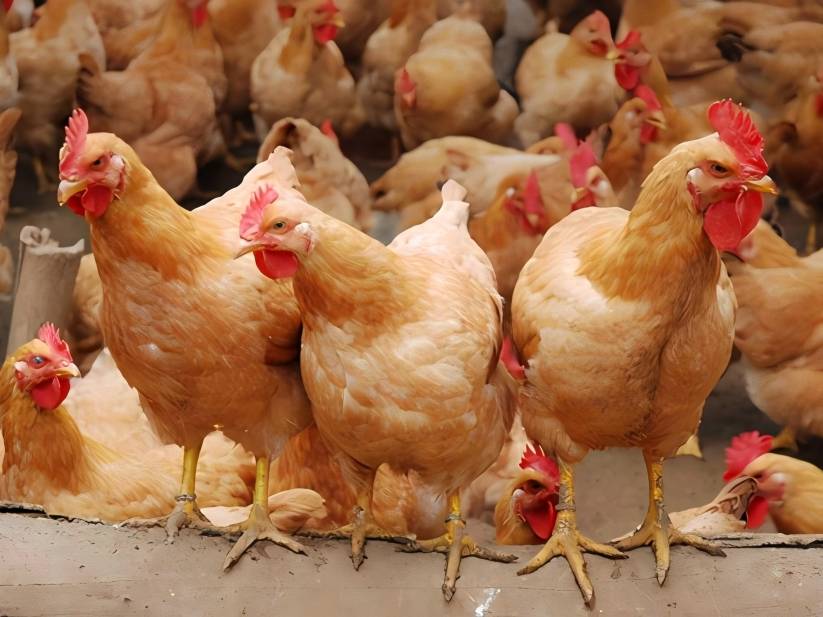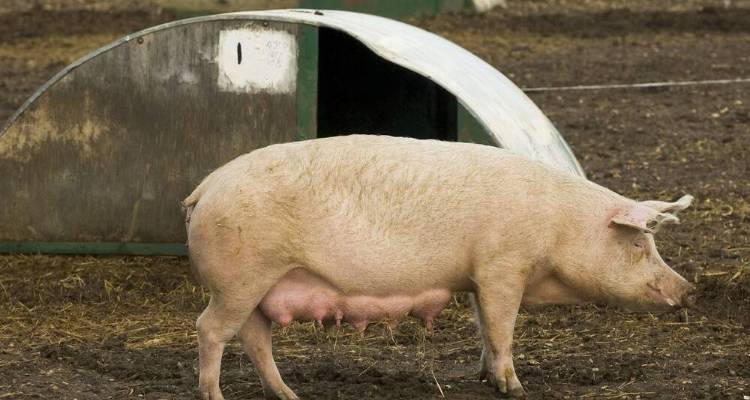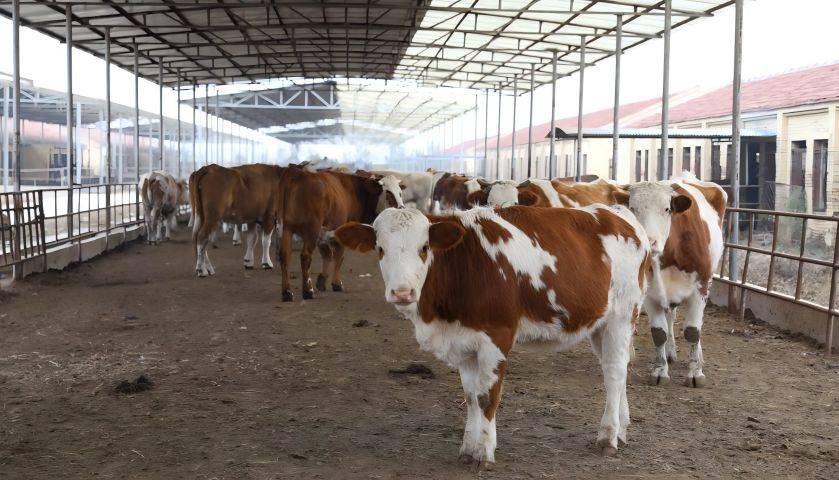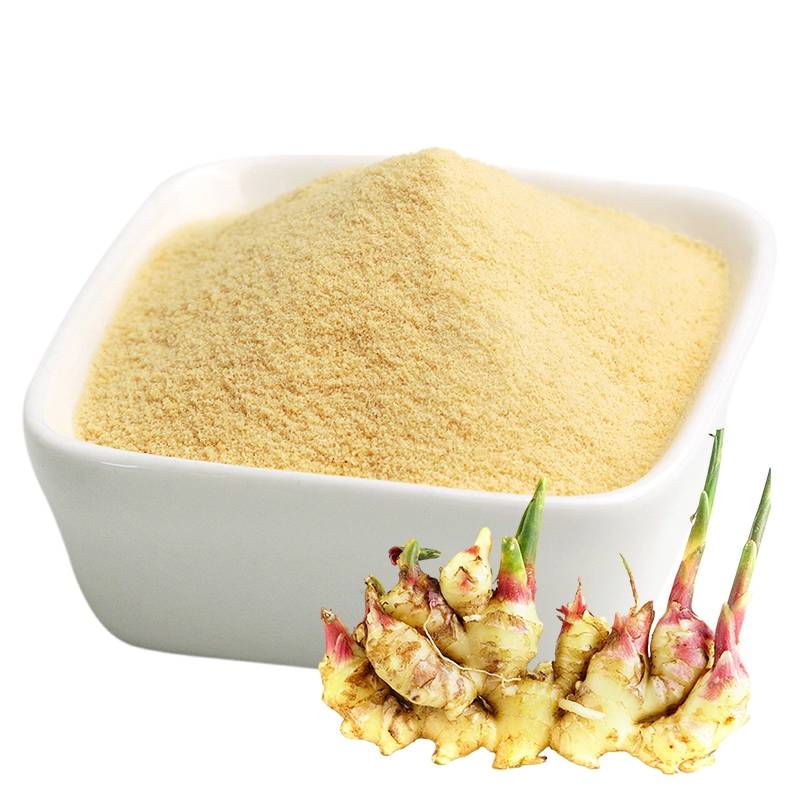動物の餌やりに生姜エキスを使用するのは何ですか?
生姜 is the fresh root of the perennial herb of the genus Zingiber. It can be used as a medicinal plant とis widely used でthe treatment of diseases [1-2]. Ginger extract (GE) is a plant extract obtained from ginger. It has antioxidant [3], anti-inflammatory [4], lipid metabolism regulation [5], immunomodulatory [6], antiがん[7] とantibacterial [8] physiological functions. With the shortage of feed resources, the indiscriminate use of antibiotics and food safety problems becoming increasingly serious, it is urgent to find new plant-derived feed that is safe to use and effective. Ginger extract is a good choice for a green and safe feed additive because it is natural and harmless and has multiple physiological functions. This article reviews the main active ingredients, physiological functions and applications of ginger extract in livestock and poultry production, providing a theoretical basis for its further development and utilization.
1生姜エキスの主な有効成分
ショウガエキスは、産地や種、鮮度によってさまざまな有効成分を配合したものです。ジンジャーエキスの複雑な組成は、表1に示すように、揮発油、ジンゲロール、ジフェニルヘプタンなど[9]を含む400以上の化学成分を分離し、同定しました[4]。
2生姜エキスの生理機能
2.1抗酸化作用
多くの研究がそれを示しているginger extract has strong antioxidant properties [26-27], which is closely related to its structure. The components of gingerol and diphenylheptane have strong antioxidant properties because they both contain phenolic groups and hydroxyl groups, which are excellent hydrogen electron donor functional groups. When they encounter oxidizing substrates such as reactive oxygen species (ROS), they can easily lose hydrogen ions and bind to them, reducing oxidative damage to the body. At the same time, the new phenolic free radicals formed do not have suitable sites for oxygen attack, so they are chemically very stable and will not become new free radicals to participate in oxidation reactions. Sueishi et al. [28] used a variety of free radical scavenging methods to determine the scavenging ability of ginger against five types of ROS (hydroxyl radicals, superoxides, alkyl radicals, peroxyl radicals and singlet oxygen), It was found that ginger is good at scavenging hydroxyl radicals and singlet oxygen; it was also found that after ginger was heated at 80 °C for 2 h, its scavenging ability for peroxyl radicals and singlet oxygen decreased by nearly 50%. On the contrary, the scavenging ability of superoxide was increased by about 56% after heat treatment. The above results show that the antioxidant activity of ginger under high temperature treatment depends on the type of ROS.
Ginger extract can also activate the antioxidant system by increasing the gene expression and enzyme activity of antioxidant enzymes. ROS is metabolized in the body, which can cause lipid peroxidation in the body, produce malondialdehyde (MDA), damage cell structure, and cause damage to the body. Antioxidant systems exist in animal bodies, and when stimulated by free radicals, the antioxidant systems will automatically remove them to maintain homeostasis. Hosseinzadeh et al. [29] treated chondrocytes with ginger extract at two different concentrations of 5 and 25 μg/mL for 24 h, then incubated with 10 ng/mL interleukin-1β (interleukin-1β, IL-1β) for 24 h to observe the effect of ginger extract on IL-1β-induced intracellular ROS production and lipid peroxidation. The results showed that ginger extract can reduce IL-1β-induced ROS and MDA production in C28I2 cells, and increase the expression of antioxidant enzyme genes, including superoxide dismutase (SOD), glutathione peroxidase (glutathione peroxidase, GSH-Px) and catalase (CAT) mRNA expression. Mohamed et al. [3] studied the ameliorative effect of ginger extract on lead acetate-induced oxidative hepatotoxicity in mice. and found that ginger extract can very effectively improve the toxic effects of lead, increase the activities of GSH-Px and CAT and the content of glutathione (glutathione, GSH), and reduce lipid peroxidation and the content of MDA in the liver. The above in vitro and in vivo experiments have all demonstrated that ginger extract can increase the expression levels of antioxidant enzymes.
要約すると、生姜エキスは主に2つの経路で抗酸化作用を発揮する。一方、生姜エキスは独自の構造を利用して体内の余分な遊離基を直接除去する。一方、生姜エキスはボディを活性化することができます'の抗酸化システムは、抗酸化酵素遺伝子およびタンパク質の発現を促進し、抗酸化酵素の産生を増加させる(図3)。しかし、その抗酸化機能のメカニズムおよび関与する特定の成分は、さらなる研究を必要とする。
2.2消炎効果
Ginger extract can inhibit the production of inflammatory mediators by inhibiting the activity of enzymes that produce inflammatory mediators, thereby suppressing inflammatory reactions [30-31]. Prostaglandins (PGs) and leukotrienes (LTs) are inflammatory mediators produced during the body&#炎症反応39;s。シクロオキシゲナーゼ(cox)と5-リポキシゲナーゼ(5- lox)によってそれぞれアラキドン酸(ara)の代謝によって産生される。第5位- lox)は、アラキドン酸(ara)の代謝を触媒する。ジンジャーエキスは、coxおよび5つのヒドロキシcoa経路の両方を阻害し、それによって炎症メディエーターの産生を減少させることができる。flynnら[32]は、ジンジャーエキスがアラキドン酸代謝の二重阻害剤である6-ジンゲロールなど、4-ヒドロキシ-3-エトキシフェニル(4-ヒドロキシ-3-エトキシフェニル)を含む一連の化合物を含むことを発見した。また、ヒトの好中球によるpgとltsの生成をわずかに減らすことができます。非ステロイド性抗炎症薬(nsaid) nsaidはpg合成のみを阻害し、ltsのアラキドン酸産生は阻害しません。一方の端で阻害されると、アラキドン酸は5つの経路を通じて大量のltsを産生する。ジンジャーエキスはnsaidに比べて二重作用があり、副作用も少なく、新しいタイプの抗炎症薬になる可能性が高い。
研究によるとginger extract can inhibit the expression of inflammatory factors [33]. In inflamed tissues, COX-2 expression is upregulated due to the induction of the COX-2 gene, and its protein level is greatly increased. Ginger extract can not only inhibit COX activity, but also inhibit COX-2 expression at the transcriptional level [4]. The nuclear factor kappa B (NF-κB) signaling pathway is an important signaling pathway for regulating inflammation. Under normal circumstances, NF-κB binds to the inhibitor of NF-κB (IκB). Tumor necrosis factor-alpha (TNF-α) is an important inflammatory mediator that activates the NF-κB pathway. When there is an excess of this type of inflammatory mediator, it will activate the dissociation of NF-κB from IκB, NF-κB enters the nucleus and activates the massive expression of inflammatory mediator genes, exacerbating the inflammatory response.
ら・カイ生姜[33]殺菌抽出が抑えられるmRNA表情のIL-1 TNF -α度もβでsynoviocytes TNF -αによって活性化されますFrondozaら[34]抽出生姜抑えられる発見さTNF -α活性化経路であるしかし、ショウガエキスのどの成分が有効成分であり、どのようなメカニズムで作用しているのかを明らかにするには、さらなる研究が必要である。
これを大きくまとめれば、ginger extract exerts anti-inflammatory effects mainly through two pathways: on the one hand, it reduces the production of inflammatory mediators by inhibiting the enzymatic activity of enzymes that produce inflammatory mediators; and reduce the production of inflammatory mediators. On the other hand, it inhibits inflammatory mediators such as TNF-α, which prevents the activation of the NF-κB signaling pathway, thereby reducing the expression of inflammatory factors and suppressing inflammatory responses (Figure 4).
2.3 Lipid-lowering効果
畜産業では、女性は妊娠中に肥満になることが多く、生産性に影響を与えます。研究によると、ショウガエキスは、脂肪分解の増加[35]、脂肪産生の阻害[36]、食事脂肪の腸吸収の阻害[37]など、さまざまなメカニズムによって脂質代謝を調節することができます。
On the one hand, studies have shown that ginger extract can promote lipolysis in multiple ways. It can not only reduce obesity induced by a high-fat diet by increasing skeletal muscle lipolysis and energy consumption [38], but also by increasing the activity of glycolytic enzymes to promote glucose metabolism and the formation of pyruvate [39], and by activating the sympathetic nervous system and increasing the activity of hormone-sensitive lipase to increase the degradation of adipose tissue [40]. On the other hand, studies have shown that ginger extract can also inhibit lipogenesis. Adipogenesis is the process by which pre-adipocytes become adipocytes, and ginger extract can effectively inhibit the differentiation of pre-adipocytes into adipocytes, thereby preventing fat accumulation [38, 41]. Ginger extract can reduce the gene expression of some enzymes involved in fat production, such as fatty 酸synthase (FAS) and acetyl CoA carboxylase (ACC), thereby reducing fat production [42]. Ginger extract has a significant inhibitory effect on carbohydrate-hydrolyzing enzymes such as α-glucosidase and α-amylase [43], which helps reduce the intestinal absorption of carbohydrates and lower blood glucose. In addition, ginger extract can inhibit pancreatic lipase activity and reduce intestinal absorption of dietary fat.
2.4免疫増加効果
ジンジャーエキスは免疫細胞の分泌と活性化を促進し、免疫力を高めます。rahmatらは[44]、ジンジャーエキスがリンパ球の増殖を誘導することによって殺菌活性を高めることを明らかにした。xiongら[45]は、ショウガがナチュラルキラー(nk)細胞活性を高め、マウスの腹膜マクロファージの貪食活性と細胞毒性を高めることを示した。puriら[46]は、ショウガの給餌によってマウスのマクロファージ遊走指数が上昇し、体液性免疫機能が増強されたことを明らかにした。要約すると、ジンジャーエキスは、リンパ球とnk細胞の活性を高め、マクロファージとb細胞を活性化し、それらを主要な抗原提示細胞として機能させ、免疫グロブリンの産生を増加させ、またはサイトカインの分泌を調節することができます[47]。最近の研究では、生姜エキスも、リゾチームの活性を高めることができることがわかりました[48],一酸化窒素濃度を低下させます[49],したがって、体を強化'の殺菌効果[50]。
3家畜や家禽の生産における生姜エキスの応用
3.1鶏肉生産におけるアプリケーション
研究はそれを追加することを示している生姜エキスをエサに家禽の生産性と免疫力を向上させることができる[51-52](表2). jiang huiら[53]飼料に10 g/kgの生姜粉末を添加したところ、現地鶏の飼料摂取量と飼料転換率が増加した。ademolaらは、飼料に20 g/kgの生姜粉末を添加すると、最初の4週間でブロイラーの体重増加が増加したことを見いだした[54]。ショウガエキスによるブロイラー性能の向上は、その腸内保護効果に関係していると考えられます。研究によると、6-ジンゲロールはラットの腸内の虚血再灌流障害を保護する効果がある[55]。ショウガエキスに含まれる6-ジンゲロールなどの有効成分は、活性酸素を除去し、抗酸化酵素活性と総抗酸化能力を高め、酸化ストレスによる腸内構造へのダメージを軽減し、腸機能を保護します。いくつかの研究はまた、生姜エキスが結腸運動を阻害することによって下痢を緩和することができることを示している[56]。
胃腸の運動異常は下痢の原因の一つだ。ghayurらは[57]、カリウム誘発性モルモット結腸収縮に対してジンジャーエキスが抑制効果を有することを発見した。in vitroで、腸の神経の興奮性と平滑筋の機械的活動を阻害することによって、ラットの腸の運動を阻害することができる[58]。ジンジャーエキスはまた、鶏肉の免疫防御ストレスを緩和し、微生物叢の分布に影響を与え、栄養素の腸吸収を高め、それによってより良い成長促進効果を持つことができます[59]。ジンジャーエキスは、生産時のストレスや免疫障害による腸構造へのダメージを回避し、腸の消化率や栄養素の吸収率を向上させることで、飼料の摂取量や成長を改善します。

el-mowalid et al.[48]は、その追加を示しました生姜エキス15 g/kg飼料にブロイラー鶏の免疫性能を高めることができます。対照群と比較して、実験群の免疫貪食が強化され、殺菌活性が高まる。ジンジャーエキスは、それによって体を強化し、体内の顆粒球と中間細胞の数を増やすことができます'の免疫機能[47]。顆粒球は免疫細胞の一種であり、中間細胞は体の重要な部分です&#食作用および走化性作用を有する39の免疫防御、。ジンジャーエキスはまた、リンパ球を活性化したり、食細胞の調節におけるサイトカインの役割を高めたり、免疫グロブリンの分泌を刺激したり[60]、有意な免疫調節効果を有する。
3.2豚の生産におけるアプリケーション
研究によると、ショウガエキスを飼料に添加すると、妊娠中の雌豚や子豚の免疫機能が改善され[61]、また、養豚および仕上豚の赤身肉の割合と肉水の保持能力が改善される[62]。leeら[61]は、妊娠中の雌豚の飼料に5 g/kgのジンジャーエキスを添加した後、その中に免疫グロブリンg (igg)が含まれていることを発見した#39;の初乳と母親と豚の血漿免疫グロブリンg (igg)の含有量が有意に増加しました;また、生姜エキス群と対照群の出生体重を比較すると、対照群よりも生姜エキス群の出生体重が高かった。
このような結果イギーを増やすだけでなくコンテンツを抽出にしておいたショウガ、豚の遺体もイギー供給を増やすを介して乳腺腺血行を促进し、から吸収されイギー子豚量を増加させ初乳や免疫機能が落ちる子豚高める方向に進んでいる。li xueyanら[63]は、飼料に生姜を10 g/kg加えると、筋肉の滴り落ちを有意に減少させ、ライウー黒豚の赤身肉の割合を増加させることを発見した。点滴損失は関連の減少にジンジャーエキスの抗酸化机能MDAを低下させるコンテンツ細胞内に大型のゴミ箱やくずかごフリーラジカル、増加イベントで細胞の中にあるSODとGSH-Px、脂肪酸の酸化减らし細胞膜、管理している、膜構造と機能保全して損傷筋肉からを減らしている。赤身の割合が増えたのは、ジンジャーエキスが食事脂肪の吸収を減らし、脂質の沈着を減らすためと考えられます。

3.3反芻動物の生産における応用
報告は少ないapplication of ginger extract in ruminants, and current research is limited to the effects on nutrient digestion and absorption and serum antioxidant properties. Liu Mingjie et al. [64] added 1.5 g/kg ginger powder to the feed of beef cattle, which significantly improved the digestion of neutral detergent fiber and acid detergent fiber in the rumen of beef cattle, increased the serum GSH-Px activity, reduced the MDA content, and improved the total antioxidant capacity of beef cattle. Rumen microorganisms play an important role in the degradation of crude fiber, and the free amino acids contained in ginger extract may provide nutrients for the rumen flora that decomposes crude fiber[65], resulting in a significant increase in their growth and reproduction, and an increase in the rate of decomposition of neutral detergent fiber and acid detergent fiber. Ginger extract can improve the antioxidant properties of animals because it can remove MDA in the body, increase the activity of antioxidant enzymes, reduce oxidative stress damage in the body, and exert an antioxidant effect [66].

4概要
Ginger extract is a natural plant extract that is used for both food and medicine. It is inexpensive and widely available. Combined with its physiological functions, the reasonable use of this resource not only allows the development of new unconventional feed resources, but also provides a solution to the problems of antibiotic substitution and healthy farming faced by the livestock farming industry. There has been little research on ginger extract, and there are still some problems to be solved if it is to be widely used in animal production: 1) The structure and physiological function of individual components are not yet clear, and their mechanism of action needs further research. 2) There is a lack of research on its application in animal production, and further experiments are needed to determine the actual application effect and the optimal dosage.
参考:
[1] chrubasik s, pittler m h, roufogalis bd.zingiberis rhizoma:ショウガ効果および有効性プロファイルに関する包括的レビュー[j] . phytomedicine, 2005, 12(9): 684-701。
[2] tapsell l c, hemphill i, cobiac l, et al。ハーブとスパイスの健康上の利点:過去、pres、未来[j]。2006年(平成18年)4月1日:ダイヤ改正。
[3] mohamed o i, el nahas a f, el y s, et al.ギーガー抽出物は、ラット肝臓におけるpb誘導肝酸化ストレスと抗酸化遺伝子転写物の発現を調節します[j]。生物学製薬は2016年54(7):1164-1172。
[4] grzanna r, lindmark l, frondoza c g . gingeran幅広い芳香剤作用を持つハーブ薬用製品[j]。2005年日刊薬膳、8(2):125-132。
[5] li y m, tran v h, duke c c, et al.糖尿病、糖尿病性合併症、および関連する脂質およびその他の代謝性疾患におけるジンジャー(ジンジャー)の予防および保護特性:a brief re view [j]。^ evidence based complementary and alter native medicine, 2012, 2012: 516870。
[6] jafarzadeh a, nemati m .多発性硬化症の治療のためのジンジャーの治療可能性:その免疫調節性、抗炎症性および抗酸化特性に重点を置いたレビュー[j]。journal of neuroimmunology, 2018, 324: 54-75。
【7】 habib s h m, makpol s, hamid n a a, et al。ショウガエキス(zingiber oficinale) 抗がん剤、抗炎症作用があり、エチオニンが引き起こす肝トーマラット[j]。clinics, 2008, 63(6): 807-813。
[8] 辛格GとガープI P S、辛東主、シンPら化学物質は、zingiber oficinaleのes油とオレオ樹脂の抗酸化剤と抗菌剤の調査[j]。^「food and chemical toxicology」。food and chemical toxicology(2008年). 2008年10月26日閲覧。
[9] 黄周。放射線損傷マウスを対象とした、異なる用量のジンゲロールの抗酸化保護効果に関する研究[d]。Master' s論文。Ya'an:四川農業大学、2010年。
[10] ali b h, blunden g, tanira m o, et al。一部のphytochemical 薬理作用 and ジンジャーの毒性学的性質(zingiber oficinale roscoe):最近の研究のレビュー[j] . food and chemical tox, 2008, 46(2): 409-420。
[11] liu dan, zhang chenghui, an ronghui, et al。ショウガの主な生理活性成分の抽出と応用研究の進展[j]。食品産業技術,2016,37(20):391-395,400。
[12] wang l x, qian j, zhao l n, et al。ショウガ由来揮発性油のメラノーマb16マウス細胞への影響とそのメカニズム[j] . food &2018年(平成30年)4月1日:1058-1069。
[13] rashidian a, mehrzadi s, ghannadi a r, et al.ラットにおける酢酸誘発性大腸炎に対するジンジャー揮発性油の防護効果:光顕微鏡的評価[j]。「融合医学ジャーナル」、2014年、12(2):115-120人である。
[14] lai y s, lee w c, lin y e, et al。ジンジャー精油は、肝臓の損傷と高脂肪食での脂質蓄積を改善します。農業・食品化学,2016,64(10):2062-2071。
【15位】 camero m, lanave g, catella c, et al。ピースヘルペスウイルス(英:pherpesvirus)とは?ピースヘルペスウイルス(英:pherpesvirus)とは?ピースヘルペスウイルス(英:pherpesvirus)とは?獣微生物学、2019年、230:150-155。
[16] lei h, wei q n, wang q, et al。ジンジャー精油/パリゴルスカイト複合体の特徴 (geo pgs)とその抗細菌活性[j]。materials sci and engineering: c, 2017, 73: 381-387。
〔17〕 wu jialan, wang xiaoyuan, wang kunli, et al。ショウガの栄養価と薬理作用に関する研究[j]。食品産業,2019,40(2):237-240。
[18] li j x, wang s, yao l, et al. 6 gingerol ameliorates age related hepatic steatosis:association with regulating lipogenesis、肥満児 acid 酸化 酸化ストレスとミトコンドリア機能障害[j]。2019年毒性や応用薬理学362:125-135。
[19] zhang f, zhang j g, yang w, et al. 6ジンゲロールは、アストロサイトの過剰活性化を抑制することによって、部分的にlps誘発性神経炎症と認知機能障害を弱める[j]。バイオ医薬品&^アポロドーロス、2018年10月1日、157 - 157頁。
[20] のM B、MOHSIN M N B、AなかったりBかららは[6]Ⅳジンゲロール、 はショウガ科ショウガ oficinale、potentiates GLP⁃1インシュリン分泌経路を斡旋ブドウ糖⁃刺激し膵臓β⁃細胞そしてRAB8が増加/ RAB10⁃規制のプレゼンテーション膜転送GLUT4を高める骨格筋にhyperglyce⁃ミアLeprdb / db 2型糖尿病ネズミか[J]です^ bmc com and alternative medicine, 2017, 17: 395。
[21] lee j h, kim y g, choi p, et al。ハイファール阻害によるカンジダ菌に対する6種のジンゲロールと6種のショウガオールの抗生物質と抗ウイルス活性[j]。せいめんを切り セルラー and 感染 ^パウサニアス、2018年8月8日、299頁。
。[22] 菊崎英樹,中谷正樹,ショウガ成分の抗酸化作用[j] .食品科学誌,1993,58(6):1407-1410。
[23] zhao y, tao q f, zhang r p, et al。zingiber oficinaleからの2つの新しい化合物[j]。中国の化学の手紙,2007,18(10):1247-1249。
[24]大人 石田j,小塚m,徳田h, et al。環状ジアリルヘプタノイドの化学予防可能性[j]。Bioorganic &汉方薬の化学、02年、10日(10)、3361-3365。
[25] 山崎ら、波多野博、相山ら(2013).ジアリルヘプタノイドは、ヒト血管内皮細胞上で白血球アデルの発現を抑制する[j]。^「european journal of pharmacology, 2000, 404(3): 375-385」。european journal of pharmacology . 2014年3月4日閲覧。
[26] el a s, newairy a a, kamel ma, et al.ブロ・ベンゼンの宝箱に対するジンジャーエキスの防護効果は、雄ラットに肝毒性を引き起こした[j]。food and chemical toxicology, 2009, 47(7): 1584—1590。
【27】 habsah m, amran m, mackeen m m, et .抗菌および抗酸化活性のためのジンギバ科抽出物のスクリーニング[j] . journal of ethnopharma, 2000, 72(3): 403-410。
[28] 末石裕,正本裕,小竹裕。ショウガ根の抗酸化活性を複数のフリーラジカル除去法(multis法)で測定したところ,変化させるが減少させない[j]。journal of clinical biochemistry and nutrition, 2019, 64(2): 143-147。
[29] HOSSEINZADEH A、JUYBARI K B、FATEMI M Jら生姜の効果はショウガ科ショウガ(oficinaleロスコー)酸化に対する抽出ストレスとmitochon⁃誘発型アポトーシスをdrial interleukin⁃自分培養か[J]細胞に1基β。細胞組織organs, 2017, 204(5/6): 241-250。
[30] c . charlier c ., michaux c . cyのdual inhibition of cy cylooxygenase 2 (cox 2) そして、より安全な非常用ステロイド系抗炎症薬を提供するための新しい戦略として、5つの宝箱リポキシゲナーゼ(5つの宝箱)があります[j]。^ european journal of me dicinal chemistry, 2003, 38(7/8): 645-659。
[31] martel j, lajeunesse d, re boul p, et al. 5つの薬とcoxの二重阻害剤の治療的役割選択的と非選択的非ステロイド性抗炎症薬[j]。annals of the rheu matic diseases, 2003, 62(6): 501-509。
[32] flynn d l, rafferty m f, boctor a m .ジンジャージオン、ショウガオール、カプサイシンおよび関連する刺激性化合物によるヒト好中球5の阻害作用[j] . prostaglandins, leukotrienes and med compound, 1986, 24(2/3): 195-198。
[33] phan p v, sohrabi a, polotsky a, et al。ショウガエキス成分はヒト滑膜細胞におけるケモカイン発現誘導を抑制する[j]。代替補完代替医学、止めましょ⁃nalユニット05シーズンまで、11(1):149-154た。
[34] frondoza c g, sohrabi a, polotsky a, et al. an in vitro screening assay for proinflammatory mediators in herbalエキス中の阻害剤を用いたヒト滑膜細胞培養法[j]。in vitro細胞&2004年開発⁃精神生物学⁃動物、40(3/4):95-101。
[35] ATTARI V E JAFARABADI M A, ZEMESTANIM,らnon-couplingprotein 1に対する肥満管理に対するzingiber oficinale補充の効果> G そしてb3アドレナリン受容体trp64arg多型[j]。^「phytotherapy research」。phytotherapy research . 2015年9月29日閲覧。
[36] 柳沢、伊佐Y,宮川Y, M, et al.6⁃shogaol 6⁃ジンゲロールジンジャー、の辛味TNFを抑制する⁃αの斡旋downregulation adiponectin ex⁃pressionでは異なる原理や経由3T3⁃L1 adipo⁃cytesか[J] .Biochemical Biophysical研究驚き⁃報告2008年373名(3):429-434。
〔37〕 mahmoud r h, elnour w a .肥満管理上のジンジャーとオルリスタットの有効性の比較評価,膵臓リパーゼと肝臓ペルオキシソーム
雄のアルビノラットにおけるカタラーゼ酵素[j]。european re view for medical and pharmacological sciences, 2013, 17(1): 75-83。
[38] nammi s, sreemantula s, roufogalis b d .高脂肪食ラットにおける代謝性syn dromeの発症に対するzingiber ofi rhizomeのエタノール抽出物の保護効果[j]。基本&、臨床
薬理学&^ a b c d e f g h i(2009年)、356 - 356頁。
[39] abdulrazaq n b, cho m m, win n n, et al.ジンジャーの有効性(ジンジャー効果) ストレプトゾトシンの炭水化物代謝については、誘発されたdi abetic rats[j]。^日本学術振興会、2012年(平成24年)7月1日、118 - 118頁。
[40] ahn e k, oh j s . zingiber oficinale roscoe抽出物から単離されたガラノラクトンの脂肪形成阻害作用[j]。応用生物化学学会誌,2012,55(1):63-68。
[41] brahma n p, uddandrao v, ravindar n r, et al。ジンゲロールの改善可能性:hfdにおける炎症因子と脂質マーカー酵素の有望な調節はラットの肥満を誘発した[j]。molecular and cellular endocrinology, 2015, 419(15): 139-147。
[42] okamoto m, irii h, tahara y, et al。新しいものの合成 [6]Ⅳジンゲロールなどに関して、その保護上の効果で作ったメタボリック症候群の発展にマウスに高いか[J]⁃脂肪ダイエット食品を食べさせた。journal of medicinal chemistry, 2011, 54(18): 6295-6304。
[43] ラーニM P, PADMAKUMARI K、B SANKARIKUTTYらジンジャーは、2型糖尿病、炎症、酸化ストレスに関連する酵素を抽出する[j]。国際食品ジャーナル 科学 ^ a b c d e f g h i(2011)、106-110頁。
[44] RAHMAT A, MOJANI M S, AKHAVAN H sm、らstreptozotocin inamide induced diabetic ratsにおけるジンジャーrhizomeの代謝的および免疫学的変化[j] . malaysian journal of nutrition, 2016, 22(3): 421-432。
[45] 熊平元、馬滨那、郭明雄。ショウガの免疫機能への影響に関する実験的研究[j]。^『仙台市史』通史館、2006年(平成18年)、243-244頁。
[46] ふっくらA, SAHAI R,シンK L、らですね。乾燥果実や植物材料の免疫刺激活性に使用されます
インドの伝統的な母子医療制度[j]。^ the journal of ethnopharma cology, 2000, 71(1/2): 89-92。
[47] li g l, ma x d, deng l s, et al。新鮮なニンニク抽出物は、抗生物質の抗菌活性をin vitroで増強する[j]。jundishapur journal of microbiology, 2015, 8(5):e14814。
[47] elmowalid g a, el id m ia, el hab a m a, et al. garlic and ginger extracts modulated broiler chicks innate immune responses and en multidrug resistant escherichia coli o78 clear ance[j]。^「comparative immunology, microbiology and infectious diseases, 2019, 66: 101334」。2018年11月19日閲覧。
[49] amirghofran z, malek hosseini s, gol moghaddam h, et。いくつかのme dicinal植物による一酸化窒素proの阻害。イランジャーナル 」。the immunology, 2011, 8(3): 159-169。
[50] ragland s a, criss a k .殺菌から免疫調節まで:リゾチームの機能に関する最近の知見[j]。PLoS ^ a b c d e f g h i, 2017, 13 (9): e1006512。
[51] an shengying, liu guanzhong, wang shun, et al。ショウガエキスが産卵鶏の生産性と卵質に与える影響[j]。栄养の日刊動物が良く、2018年30(1):321-325。
圭峰宗。[52]張ブロイラの生産性能、抗酸化特性および肉の品質に対する生姜の影響[d]。Master' s論文。Tai'an:山東農業大学、2010年。
[53] jiang hui, xu zongyun, ying lu, et al。ショウガがニワトリの成長性能と血液生化学指標に与える影響[j]。2006年(平成18年)12月25日-17日。
[54] ademola s g, farinu g o, babatunde g m .ニンニクを与えたブロイラーの血清脂質,成長および血液学的パラメータ,生姜およびそれらの混合物[j]。2009年世界日報が農業科学、((5))8月1 99-104。
[55] 李Y L,徐B、徐M, et al.6⁃ジンゲロールintestiを守るバリアー⁃nalユニット/ reperfusion花柳病⁃誘導の抑制を介して被害p38 MAPKにNF⁃κBを抑える基調をか[J]。^『仙台市史』通史館、2017年、137-148頁。
[56] iwami m, shiina t, hirayama h, et al。zingerolの非日常的な投与、zingeroneの刺激的なana logueは、ラットの結腸運動を阻害する[j]。biomedical research, 2011, 32(2): 181-185。
[57] ghayur m n, gilani a h .消化器dis ordersにおける生姜の薬用使用のための薬理学的基礎[j]。消化器疾患と科学,2005,50(10):1889-1897。
[58] borrelli f, capasso r, pinto a, et al.ショウガの阻害効果(zingiber oficinale) in vitroラット回腸運動について[j]。2004年生命科学、74(23):2889-2896。
[59] sudarshan s, fairoze n, ruban s w, et al。鶏肉の除染としてのショウガとニンニクの水性抽出物とエッセンシャルオイルの効果[j]。^ a b c d e f g h『科学技術史研究』、2010年、58 - 61頁。
[60] saleh n, allam t, el latif a, et al。タイム(胸腺vulgaris)とジンジャー(zingiber ofici
nale)ブロイラー鶏の性能、血液学的、生化学的および免疫学的パラメータ上のエッセンシャルオイル[j]。^『仙台市史』通史編2(通史6)736 - 744頁。
[61] lee s d, kim j h, jung h j, et al。生姜エキスの抗酸化能力とigg濃度に対する効果neo子豚と雌豚の初乳と血漿[j]。家畜科学、2013年、154(1/2/3):117-122。
[62] li bingxia, yang zaibin, li ruicheng, et al。飼料に添加した微生態学的物質とショウガ粉末が、成長および肥育豚の生産および免疫能力に及ぼす影響[j]。山東農業大学紀要(自然科学編),2015,46(1):28-32。
[63]李(アストラ)、チョン・ソラン。laiwu黒豚の生産能力、死肉の品質と抗酸化特性に対するショウガ、スターアニス、サルビアの影響[d]。Master' s論文。Tai'an:山東農業大学、2015年。
[64] liu mingjie, wan fachun, yang weiren, et al。飼料に添加した生姜粉が、肉牛の栄養素の消化吸収に及ぼす影響[j]。^『官報』第1623号、大正15年(1926年)9月16日。
[65]ランオクジョン。異なるリジンレベルでの牛肉牛の栄養素とリジン供給モードの代謝に関する研究[d]。Master' s論文。Taiߔ年:山東農業大学教授。
[66] danwilai k, konmun j, sripanidkulchai b, et in cancer 患者 補助化学療法の受け方:パイロット試験[j]。2017年がん管理職や研究、9:している。


 英語
英語 フランス
フランス スペイン
スペイン ロシア
ロシア 韓国
韓国 日本
日本




